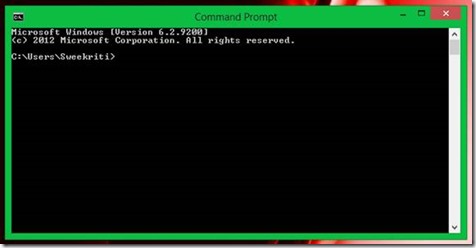Learn the Secrets of the Windows Build Number
Most of you may not even know what a 'Windows Build Number' is, and for the others who did, I'm sure you never gave it much attention. But it does hold an interesting secret since Windows Vista!
You can see the build number by opening up a command prompt, which will display the build number right at the top of the window. You can also see it in a couple of dialog windows throughout the Control Panel, but the command prompt is the easiest way to get to it. Here we are talking about the original build number. Some may not see the same digits, this is because the numbers are updated when we install service packs.
Microsoft has a history of doing fun things with their build numbers — Windows 95′s build number was 950, Windows 98′s build number was 1998, Windows 98 SE was 2222, and Windows XP was 2600, a reference to the hacker magazine. (The magazine's name comes from the phreaker discovery in the 1960s that the transmission of a 2600 hertz tone over a long-distance trunk connection gained access to "operator mode" and allowed the user to explore aspects of the telephone system that were not otherwise accessible.)
But from Windows Vista onwards, they decided to start a new trend of numbers. Here are the last few build numbers:
Windows 8 – 6.2.9200
Windows 7 – 6.1.7600
Windows Vista – 6.0.6000
Notice anything interesting about those numbers?
First, the build number has increased by exactly 1600 each time.
Secondly, each number is exactly divisible by 16.
It turns out that Microsoft’s developer team made the requirement since Vista that each build be evenly divisible so that they could use the bottom four bits of the number for internal purposes. The Windows 8 developers wanted to use 8888 as the build number for Windows 8, but they couldn’t, because it isn’t evenly divisible by 16, so they ended up using the next available number that seemed somewhat fun, 9200 — likely because it was exactly 1600 more than the previous one.
Also if one notices, Windows Vista is the (6+0) 6th release since 1995. Windows 7 is the (6+1) 7th, and 8 (6+2) the 8th.
There’s no way to tell what the next version of Windows is going to bring — there’s a lot of talk about Microsoft switching to a quicker update schedule, with new versions of Windows on a regular basis.
So whenever the next Windows update comes down, check the build number. It should be divisible by 16.
For those who are interested to learn more about the Windows Build Numbers, do check out - https://technet.microsoft.com/en-us/magazine/jj663498.aspx
This is just one of the many interesting facts within the Windows System. In my next post, I'll highlight the design Easter eggs hidden with the design elements of Windows 8!
To be constantly updated on latest news from Microsoft, Follow the Microsoft Gulf Community (@msgulfcommunity) on Twitter!
References:
<https://en.wikipedia.org/wiki/2600:_The_Hacker_Quarterly>
<https://www.howtogeek.com/140411/learn-the-secrets-of-the-windows-build-number/>
